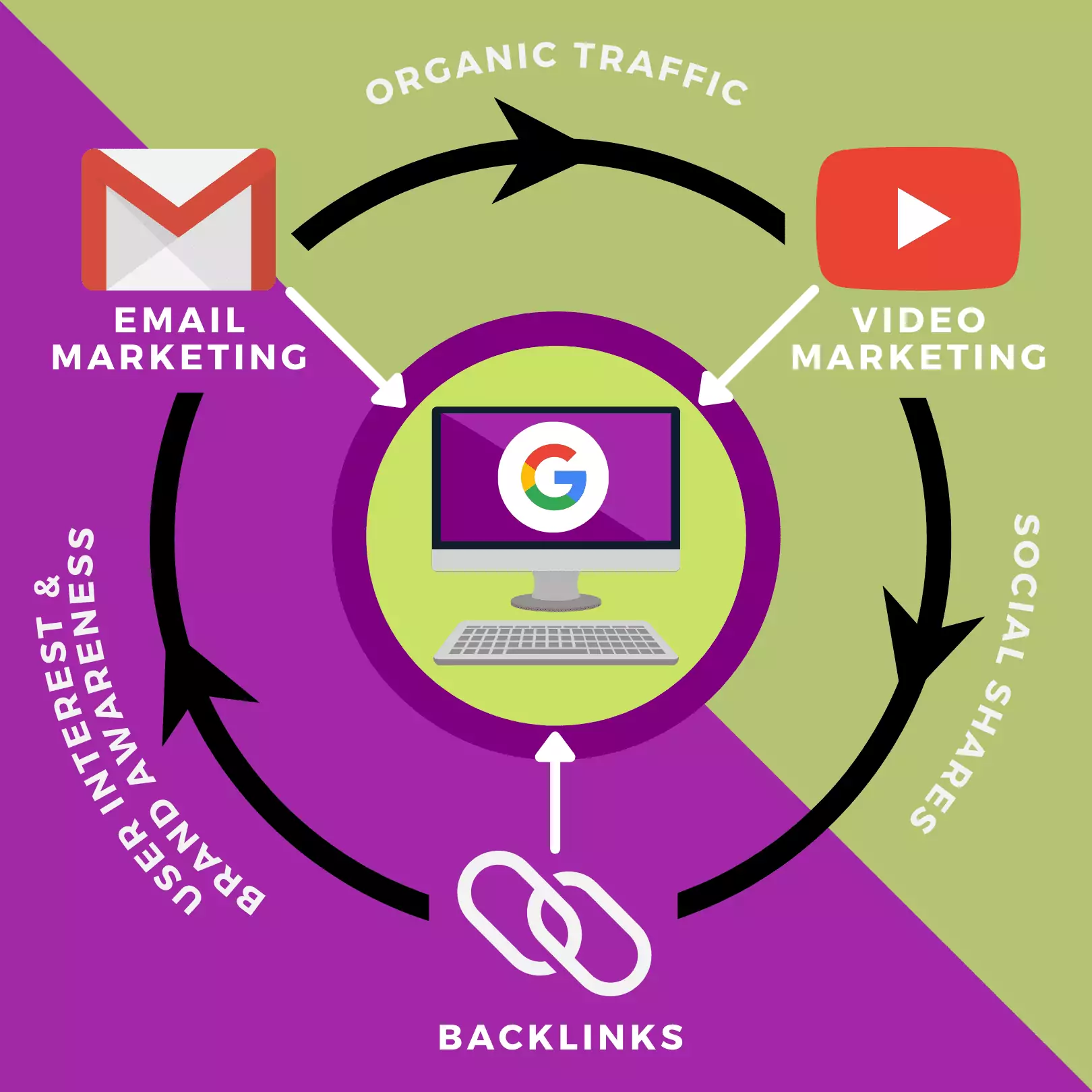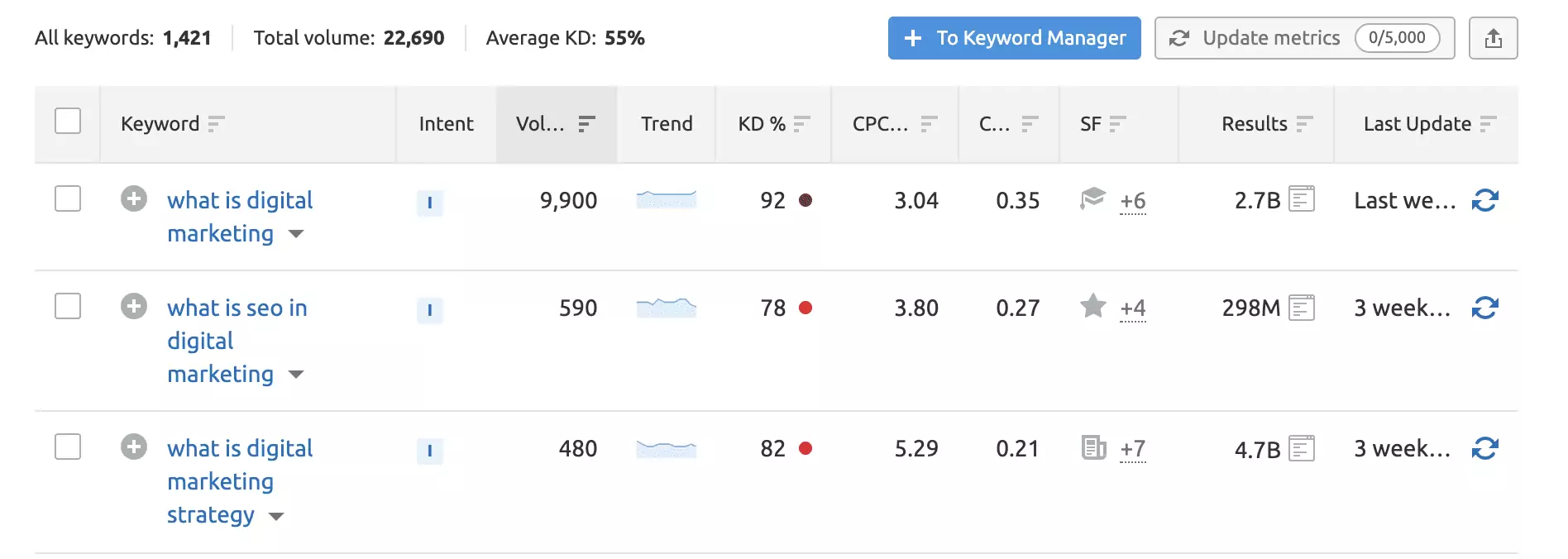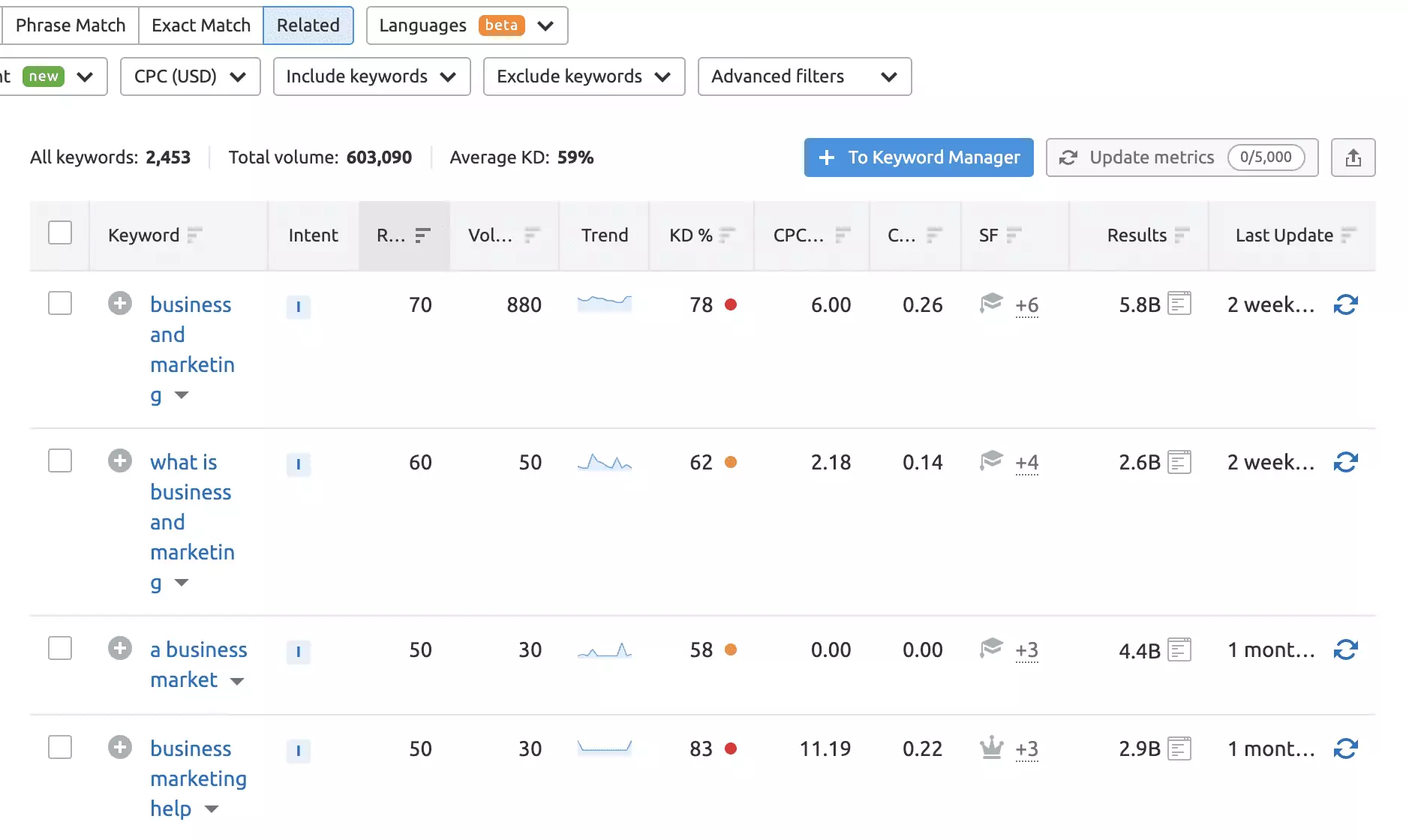As a Seattle native, I am very familiar with the majesty and magic of Evergreen trees.
Known for staying green and fresh year-round, the Evergreen trees have made their home in the Pacific Northwest and have become the inspiration for many photography portfolios and adventure wedding backdrops.
So it’s no surprise that evergreen content – content that’s meant to stick around and stay “fresh” for years to come – was named after the Evergreen. And as an SEO specialist, I appreciate any great piece of content that generates traffic long after you’ve hit “publish”.
In this post, you’ll learn:
- What evergreen content is.
- Why it matters for SEO.
- How to create evergreen content that drives traffic, leads, and shares.
What is Evergreen Content?
While my introduction makes it clear that evergreen content has earned its name from these long-lasting trees, this explanation doesn’t fully communicate the purpose and benefits of creating evergreen content.
In fact, evergreen content is about far more than just creating content that’s timeless.
Evergreen Content Definition:
Evergreen content is content that remains relevant regardless of when it was published or how long it has been live. While many pieces of content quickly go out of style (think: wearing skirts over pants after 2007), evergreen content provides value well into the future.
With a data-driven strategy, evergreen content can help you generate user interest (and traffic) over a long period of time. That means users can discover this content, read it, and share it long after it originally went live.
Why is Evergreen Content Great for SEO?
Evergreen content is great for SEO because it allows you to attract organic traffic, for months or even years, off of a single piece of content.
Not only is this great for your budget (a single investment for long-term results), but it can elevate your multi-channel SEO strategy overall.
Benefits of Creating Evergreen Content
There are several benefits to creating evergreen content, some of which include:
- Better ROI on your content marketing efforts
- Long-running organic traffic from a single piece of content
- Ongoing social shares
- Attraction of backlinks to your website
- Fewer updates required on “old” content
- Access to historical traffic and user behavior data to inform your content strategy
Evergreen Content Examples
Many people have the misconception that evergreen content must be article content. In reality, evergreen content can mean any timeless piece of content that’s created to generate results for the long-term, regardless of the timeframe.
Content publishers have seen success with many different types of evergreen content, including:
- Frequently Asked Questions (FAQ) pages
- Tutorials
- Videos
- Client testimonials
- Case studies
- How-to guides
- Resource guides
- Glossaries
- Checklists
- Ebooks and downloadables
Alternatively, here are some examples of content that aren’t evergreen:
- Seasonal buying guides
- News stories
- Articles about current but temporary events
- Announcements
- Dated guides (e.g. “tips for 2020”)
Characteristics of Evergreen Content
For your evergreen content to be effective, it must adhere to the following:
- It must be timeless, in that the content matter will not become irrelevant in the future.
- It must be thorough, in that it effectively covers the topic and leaves little requirement for future updates.
- It must be optimized, in that it is written with searchable keywords in mind and follows SEO best practices.
- It must be traceable, in that you can enable analytics to content performance and the results from your associated marketing campaigns.
- It must accomplish a goal, whether that means generating organic traffic, driving social shares, attracting customers, earning links, or all of the above.
In short, evergreen content is created to serve your larger marketing strategy.
Your content should not only be created to last a lifetime, but it must strive to move the needle in terms of traffic, conversions, shares, or other success metrics.
10 Tips for Creating Evergreen Content That Ranks
Evergreen content engages readers for longer without a massive amount of effort.
With the right strategy, you can publish timeless content that ensures your work stays relevant for months, years, or even decades to come.
1. Brainstorm Timeless Topics
The first step in creating timeless content is to brainstorm topics that users won’t lose interest in over time. The goal is to generate a list of topics that are ever-relevant and will provide value for the long term.
Brainstorming this list may be easier said than done. Often, trending topics or what’s in the news skews our perception of what users are interested in – and how often. Fortunately, there are a few ways to come up with ideas that aren’t influenced by trends or seasons.
Think about:
- Which topics do your target users or customers ask you about the most?
- What questions come up most often when you are speaking to users or customers?
- What are some “beginner-friendly” topics that encompass what users need to know before they buy from you or achieve their goal?
- What are some broad concepts that warrant a definition or explanation before you direct users to more complex content?
- Are there any descriptions, features, or benefits of your offerings or products that will never become outdated?
- Are there any “how-to” topics that will be relevant, regardless of the season or current trends?
- Are there strategies or tips that have stayed relevant over the past 5+ years?
While these thinking points are far from exhaustive, they present a good starting off point for you to start thinking about timeless topics for your evergreen content.
Example Activity: Marketing Agency Content
Suppose you are a digital marketing agency owner who wants to create informative evergreen content. Being in the marketing and technology space, you worry that changing trends will make it difficult to land on any timeless topics.
You begin to think about the questions your clients have most often – and which basic concept you often relay to clients before they buy. Some of these include:
- “What is digital marketing?”
- “What does ROI mean?”
- “Why do I need marketing?”
- “How does email marketing work?”
On the other hand, you also come up with some topics that are likely to go out of style, like:
- “What are the best marketing tools?” – subject to change over the years
- “How do I market my business on TikTok?” – this is a new platform and may be subject to updates
- “How much do marketing services cost?” – likely to change based on demand, inflation, and competition
It becomes obvious that the “evergreen” topics are those in the first set, based on the fact that you can create content that will remain relevant to your clients for a longer period of time. The other topics are great, but won’t translate into evergreen pieces of content.
2. Get Curious About Keywords
Now, coming up with a list of topics doesn’t make them inherently searchable, even if you have first-hand experience with people inquiring about these topics. In order to drive organic traffic, you will need to quantify the search opportunity by search volume.
Take your list of topics and use SEO keyword research tools to see how many users are searching for these terms on a monthly basis. My favorite freemium tool to use is SEMRush.
Using the Keyword Magic tool in SEMRush, I am able to see that my topic – “what is digital marketing” – has a search volume of 9,900 searches per month. I also see some related keywords which may beef up my article or become their own articles.
Discover Related Keywords
This tool can also help you discover topics that you weren’t able to think of on your own. I highly encourage you to use the Related keywords function to find additional terms, which may later become evergreen content pieces.
However, if you find that your topics don’t carry much search volume at all (under 50 searches per month or so), this likely is not a good fit for evergreen content.
Low search volume means very few people are searching for it, so it may not be worth the effort to turn this topic into a robust piece of content.
3. Peep Your Competitor’s Content
Sometimes you’ll be totally stumped on what topics to write about – and that’s okay! This is where I like to pull out the big guns… which means spying on your competitors.
It’s not as shady as it sounds. Competitor research is all about using your competitors’ performance to your advantage by discovering what they are targeting, ranking on, and writing about.
Conduct a Keyword Gap Analysis
Again, SEMRush offers comprehensive keyword research tools which also provide competitor analysis, content gap analysis, and more. I use these tools to see what keywords my competitors are targeting, to inform my own content strategy.
Here’s how it works:
- Snag the domain URLs of your top brand competitors.
- Use the SEMRush Domain Overview report to see what keywords each competitor is ranking for.
- Export these list and check off the topics that may be a good fit for your site.
- Be sure to note the search volume of these terms to confirm they are viable opportunities.
- Try the Keyword Gap tool to compare keywords across multiple competitors and see which terms are currently “untapped” by your website.
Track Their Social Content Strategy
Many times you’ll discover that your competitors are not winning on as many terms as you thought (this is good news for you!), and this can seemingly limit your list of topic ideas.
If this is the case for you, there are other methods you can try:
- Notice what topics your competitors are publishing about most on social media
- See what questions users are asking the most on their social media accounts
- Follow the hashtags your competitors are using to find new content topics
- Stay on top of Influencer conversations or use tools like Brandwatch to see what topics people are talking about
Again, you may find some trending topics but the goal here is to find topics that users are interested in most, over a long period of time, which can translate into evergreen topics for your own brand.
4. Be in it for the Long-Form
Some marketers argue that longer content is necessarily better, but this is not always the case. I’ve found that as long as you are effectively and thoroughly covering a topic, Google (and users) will value your content.
That said, I do encourage content creators to look at the top-ranking pieces of content for their chosen topic and see what Google seems to be prioritizing in Search. If the average word count is around 2000 words, it’s a good indication that your content should be this long as well, if not longer.
In any case, you want your content to be in it for the long run. This means creating content that’s objectively better than what’s already ranking.
This may mean longer, and/or it may mean adding expert-level content, including images, etc.
5. Using Research? Cite Your Sources.
Many website owners follow the logic that if you link out to other websites, then you are basically telling users to leave your website. But while I don’t recommend linking to your competitors, you should link to reputable sources – especially when citing research.
Referencing studies, reports, and reputable articles helps support your own site’s Expertise, Authority, and Trust (EAT).
Doing so will indicate to Google that your own site is a reliable source of information, which will make your evergreen content stand out against your competitors.
6. Get Creative with Media
As much as I love reading the written word, even I get bored without some snazzy photos!
Part of the success of your evergreen content will depend on engagement metrics – like how long users stay on site and whether the “bounce” soon after landing on your page.
Engaging graphics and media can encourage users to stick around for longer. Add share buttons into the mix, and this can further users to share your evergreen content on social media.
Media may include:
- Photos
- Infographics
- Videos
- Gifs
- Surveys
- Audio clips
- Memes
7. Go Viral with Video
YouTube has its own organic algorithm you can use to your advantage when you create evergreen content. With video, you can potentially rank in YouTube Search and drive traffic via Google.
I find it’s helpful to conduct keyword research for your videos so your video content is highly targeted as well. TubeBuddy is the YouTube keyword research tool I use to find searchable topics; then, I’ll make the video, post it on YouTube, and embed it in the associated blog post.
8. Optimize for Organic Search
Once you’ve identified a searchable topic, it’s time to create rankable SEO content.
First, your content should appeal to the target user and attempt to speak to whatever the user was looking for when they conducted their search. In short, this is not the time to write generic content and stuff it full of keywords.
Instead, next you will want to follow SEO best practices for optimizing your evergreen content. These include:
- Writing a keyword-optimized, concise Title Tag
- Writing an (ideally) keyword-optimized H1 Heading
- Writing a detailed Meta Description
- Using H2 and H2 headings to establish a page hierarchy
- Including Internal Links to related pages or posts on your site
- Adding images with optimized Image Alt Text
- Following Technical best practices, such as fast site speed and mobile-friendliness
9. Launch Your Content Engine
Your content is the “body” of your evergreen content strategy but your distribution strategy is really what makes the engine run. In short, simply relying on passive organic traffic won’t yield the best results.
Instead, you want to give your evergreen content many lives. This may mean repurposing your content in the following ways:
- Pulling quotes from your content to use on social media
- Turning a multi-step blog post into an email course
- Adding an opt-in to your content to gain subscribers
- Using your content as the topic for a Facebook Live or YouTube video
- Turning your content into a gated infographic or downloadable
- Re-publishing media and images from your article to social media
I highly recommend creating a Content Calendar in order to plan your content, publishing date, and content marketing strategy. Doing so will help ensure you are sharing your content across many platforms on a consistent basis.
10. Renew and Refresh
You may think that because you create “evergreen” content that it doesn’t need to be updated. Well, think again! Sometimes your content will need a few annual tweaks to ensure it’s relevant to the times.
For example, your chosen topic may not go out of style, but many articles and sources do. So, if you are referencing external websites in your content, make sure these have not become 404s and check that you are linking to the most recent source.
Another issue that may arise is if you have removed pages or posts from your website. If your evergreen content was linking to any of these, the URLs may have resulted in 404s. In this case, you will want to redirect the links to live pages on your site.
Finally, it’s never a bad idea to add additional media to your content to make it even more engaging to users. If you have more assets to add, think about beefing up your content on a regular basis.
Make the Most Out of Your Evergreen Content
Even the best evergreen content can dip in rankings. This may be due to competitors creating even better content, or search interest decreasing over time.
With this in mind, you will want to keep a close eye on your evergreen content to make sure it is always the best in the SERPs.
Another issue that may arise is that you may end up competing with yourself if you are producing content that’s too similar to the evergreen content you already have. So, before you hit “publish” on something new, consider adding this content to your existing page or article.
Watch your rankings
Use analytics tools to track the keywords you’re targeting and watch how your evergreen content is performing. This will put you in a good place to further optimize your content if you ever see a drop in the SERPs.
Drive backlinks to your content
High authority backlinks signal to search engines that your content is worth noticing. Part of your link building strategy should be to earn links to your evergreen content. At the same time, you can link from high-performing pages on your own site to your evergreen content to increase its authority.
Kick your content marketing into high gear with evergreen content
Evergreen content allows you to kill many birds with one stone, figuratively speaking, of course. It’s one of the best methods for driving traffic to your site for the long term.
When done correctly, evergreen content can attract traffic, earn social shares, draw in backlinks, and much more. I highly recommend that this become part of your content marketing strategy if you want your content to reap many benefits in one go.
Have you created evergreen content for your website?














